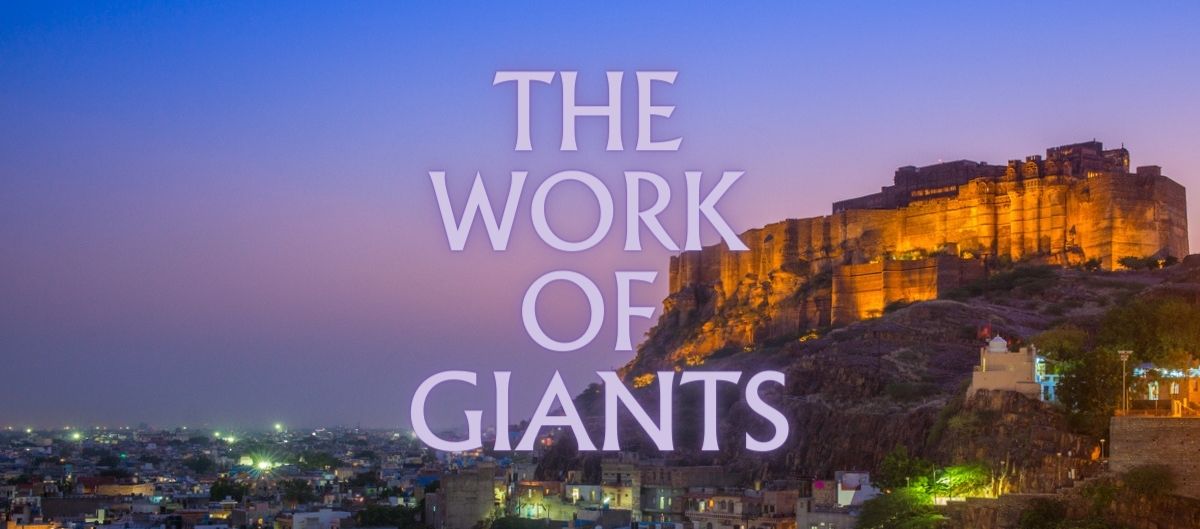See “The Work of Giants” Imposing Haunting Invincible Mehrangarh

It was the most imposing structure I have ever visited, dominating the landscape, miniaturizing the “Blue City” below. On par with the Great Wall but so much richer in ornate decoration and impossibly grand.


Mehrangarh Fort stands four hundred feet in splendor on a perpendicular cliff above the sky line of Jodhpur. Burnished red sandstone, imposing, invincible and yet with a strange haunting beauty that beckons.

Much has been written about the Citadel of the Sun, truly it is one of the most impressive in all Rajasthan. So colossal are its proportions that Rudyard Kipling called it “ the work of giants”. Today, it is acknowledged as one of the best preserved forts in India.
Mehrangarh Museum Trust

The fort’s entrance is guarded by a series of seven famous gates. Fifteen small handprints are framed to the left of the innermost gate, the Iron Gate or Loha Pol. Handprints that date back to the 1843 death of Maharaja Man Singh. His wives each pressed a handprint into the clay before throwing themselves on his funeral pyre in an act of self-immolation known as the act of “sati”.
The practice horrified colonial sensibilities and was outlawed by the British in 1829. It was not officially condemned by the Indian government until 1987 when they passed the Commission of Sati (Prevention) Act. The last recorded case of sati in Jodhpur was in 1953.

Mehrangarh contains some of the finest palaces and historic preserves in all of India. Its museum houses many priceless relics of Indian courtly life. Furnishings include a Hall of Mirrors, an extensive armory and displays of the trapping of the Maharajas: turbans, palanquins, and ceremonial gold and silver elephant howdas or saddles.

My visit inside the fort offered a peek into the opulence of the courtly life of Rajasthani royalty.








Most of the fort visible today dates from the mid 1600s, and throughout its history various maharajahs have left their mark on the architecture.
Related Posts
Rio de Janeiro and the Girl from Ipanema: Where Music Meets the Sea
Rio de Janeiro is more than a city—it’s sun-soaked poetry. From the iconic Christ the …
May 3, 2025Visit the Most Beautiful Bookstore in the World
It’s called El Ateneo, Spanish for “The Athenaeum”, a place associated with learning, the arts …
April 26, 2025

Paula Pruzan | 28th Nov 23
It doesn’t seem possible it took the Indian Government 158 years to outlaw Sati! But the site is incredible!